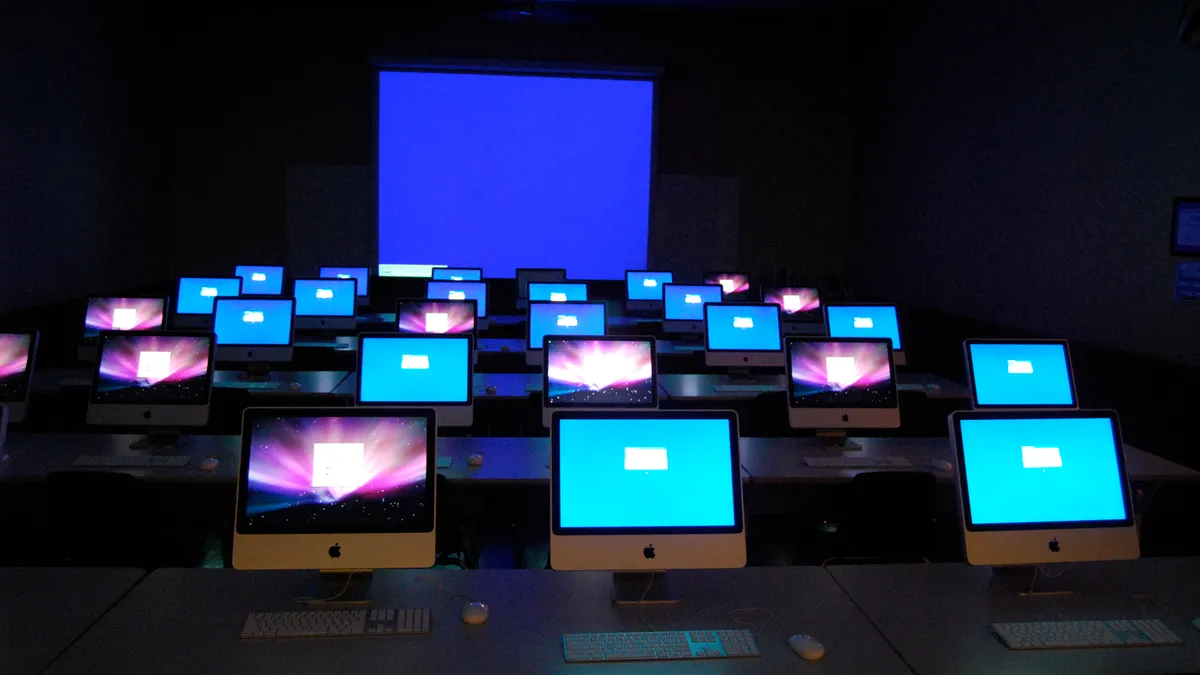There was a moment in popular culture when the vision for a the future included a teacher who looked a lot less human. In the 1960s cartoon "The Jetsons," children attend classes taught by a purple and blue humanoid computer program, Ms. Brainmocker. That idea has resurfaced several times in the decades since — often as a monster-in-the-closet for teachers, but occasionally as an aide.
In some ways, it seems Ms. Brainmocker’s moment may be on the verge of arriving. Last week, Knewton announced the creation of an artificial intelligence program that automatically delivers content to students based on how they learn. Similar programs have begun to spring up, offering ways to automate at least some of the practices of a teacher. But as the market grows, the focus seems to be less on all-out replacements like Ms. Brainmocker and more on the blackboard, the books, and the homework she assigns. In short, many of the so-called "smart" technologies are intended to aid, not replace, teachers (at least in the U.S.). But making sure they do will require examining exactly how they fit into schools.
Companies like Knewton, Amplify, and McGraw-Hill have all made efforts to parse out the complex computer mechanics behind devising a system that delivers content suited to each individual student.
They seem to be succeeding. In April, McGraw-Hill released its ALEKS program, which is supposed to accurately determine what students know and give them information like a personal tutor would. Knewton's similar announcement last week came with a twist, as its AI will be available for free to all teachers and include all kinds of content, not just paid curriculum from publishing houses. That means teachers will be able to create their own material and access content created by other teachers.
“There’s a vast pool of content out there,” said Knewton COO David Liu. “It’s been largely disparate, hard to get to, hard to find. We’re personalizing that content. We believe there’s high quality open ed content. We’re trying to bring it to everybody who’d want it for free.”
Rather than replacing the essential work of the teacher — which Liu says is the time teachers spend hands-on with students — Knewton’s AI is intended to be a time saver and a support. Teachers won’t have to rely on trial and error when it comes to delivering content to struggling students or write pop quizzes if they worry their students aren’t grasping the material. They’ll be able to use Knewton’s interface to quickly check student progress and assign material that will work for each student’s particular needs.
“Access to content doesn’t equal great learning,” said Liu. “It requires this engine that gets you what you need right when you need it.”
But there are some things to be cautious of, as well. Amplify struggled to make its own personalized learning product work — though that may be because the company insisted on delivering its own curriculum through the engine via its own troubled devices.
Still, given the nature of how at least Knewton’s AI works, early adopters will likely see some changes to the system. The robot tutor learns what works and what doesn’t as more students use it. “The system will, over time, learn what the right piece of content is,” said Liu. “As more students use it, the system continues to get progressively better.”
Knewton has been developing the software for years and has been using similar models to deliver publishers’ content as well.
The biggest question of all centers around the overall novelty of adaptive learning and the technology to support it. None of these programs have existed long enough to be vetted or to build up a body of research on whether they work as well or better than existing systems for boosting student learning. Research on how they work best in classrooms is still spotty, as well.
For teachers and administrators, many of these new systems will require a willingness to ride out a learning period and figure out what works themselves.
Would you like to see more education news like this in your inbox on a daily basis? Subscribe to our Education Dive email newsletter! You may also want to read Education Dive's look at how tech can help schools more easily align students with mentors.













